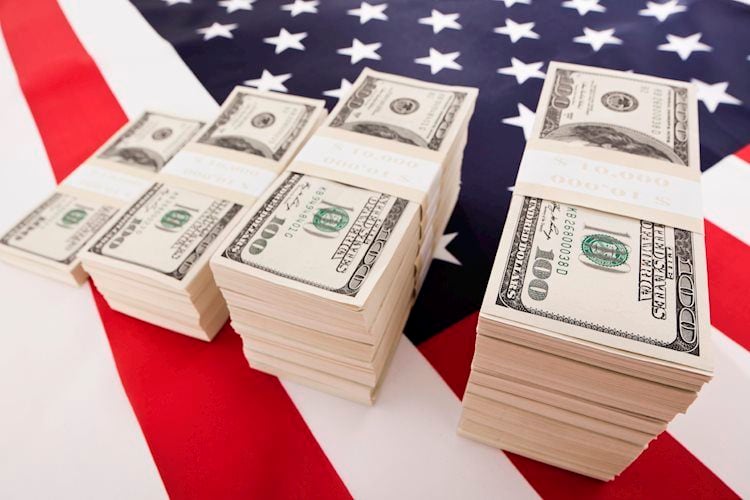- Investors continue to bet on the easing cycle beginning by June, led by incoming data.
- The Greenback is holding resilient despite the Fed’s somewhat dovish guidance and falling US Treasury yields.
- Next week, the US will release PCE figures from February.
The US Dollar Index (DXY) is currently trading at a robust 104.428, marking the highest level since mid-February. Notably, the ongoing data continues to set expectations for the commencement of the Federal Reserve (Fed) easing cycle, which most agree will kick off in June. The Fed rejected higher inflation results, and Chairman Jerome Powell reassured markets that the bank won’t react hastily to two consecutive months of increased inflation figures. In addition, the interest rate projections from 2024 didn’t change.
The US economy is holding resilient with a strong labor market and inflation remaining sticky. Next week, February’s Personal Consumption Expenditures (PCE) will provide additional guidance to markets.
Daily digest market movers: DXY continues rising on quiet Friday
- The resilience of the US Dollar is evident despite market expectations for dovish movements as continuous gains are noted.
- The Fed has reported generally stronger US data with Fed officials erring on the side of caution against easing too furiously or prematurely.
- Jerome Powell was on the wires earlier in the sessions but didn’t provide any highlights. Barr and Bostic will deliver speeches during the American session.
- US Treasury bond yields are declining with the 2-year trading at 4.60%, the 5-year at 4.19%, and the 10-year at 4.21% with all three seeing sharp declines.
DXY technical analysis: DXY stands robustly with consistent buying momentum
The indicators on the daily chart reflect a bullish momentum. The Relative Strength Index (RSI) is on a positive slope, residing in positive territory. This illustration signifies the ongoing strength of buyers, implying the potential for further appreciation in the near term.
Simultaneously, the Moving Average Convergence Divergence (MACD) is showcasing ascending green bars. This increasing bullish divergence advises that upward momentum is augmenting and that the probability of a bullish push is rising.
Examining the broader scale of technical elements, the DXY’s positioning above the convergence of its 20, 100, and 200-day Simple Moving Averages (SMAs) near 103.50-103.70 reinforces a bullish bias on larger time frames.
Fed FAQs
Monetary policy in the US is shaped by the Federal Reserve (Fed). The Fed has two mandates: to achieve price stability and foster full employment. Its primary tool to achieve these goals is by adjusting interest rates. When prices are rising too quickly and inflation is above the Fed’s 2% target, it raises interest rates, increasing borrowing costs throughout the economy. This results in a stronger US Dollar (USD) as it makes the US a more attractive place for international investors to park their money. When inflation falls below 2% or the Unemployment Rate is too high, the Fed may lower interest rates to encourage borrowing, which weighs on the Greenback.
The Federal Reserve (Fed) holds eight policy meetings a year, where the Federal Open Market Committee (FOMC) assesses economic conditions and makes monetary policy decisions. The FOMC is attended by twelve Fed officials – the seven members of the Board of Governors, the president of the Federal Reserve Bank of New York, and four of the remaining eleven regional Reserve Bank presidents, who serve one-year terms on a rotating basis.
In extreme situations, the Federal Reserve may resort to a policy named Quantitative Easing (QE). QE is the process by which the Fed substantially increases the flow of credit in a stuck financial system. It is a non-standard policy measure used during crises or when inflation is extremely low. It was the Fed’s weapon of choice during the Great Financial Crisis in 2008. It involves the Fed printing more Dollars and using them to buy high grade bonds from financial institutions. QE usually weakens the US Dollar.
Quantitative tightening (QT) is the reverse process of QE, whereby the Federal Reserve stops buying bonds from financial institutions and does not reinvest the principal from the bonds it holds maturing, to purchase new bonds. It is usually positive for the value of the US Dollar.
